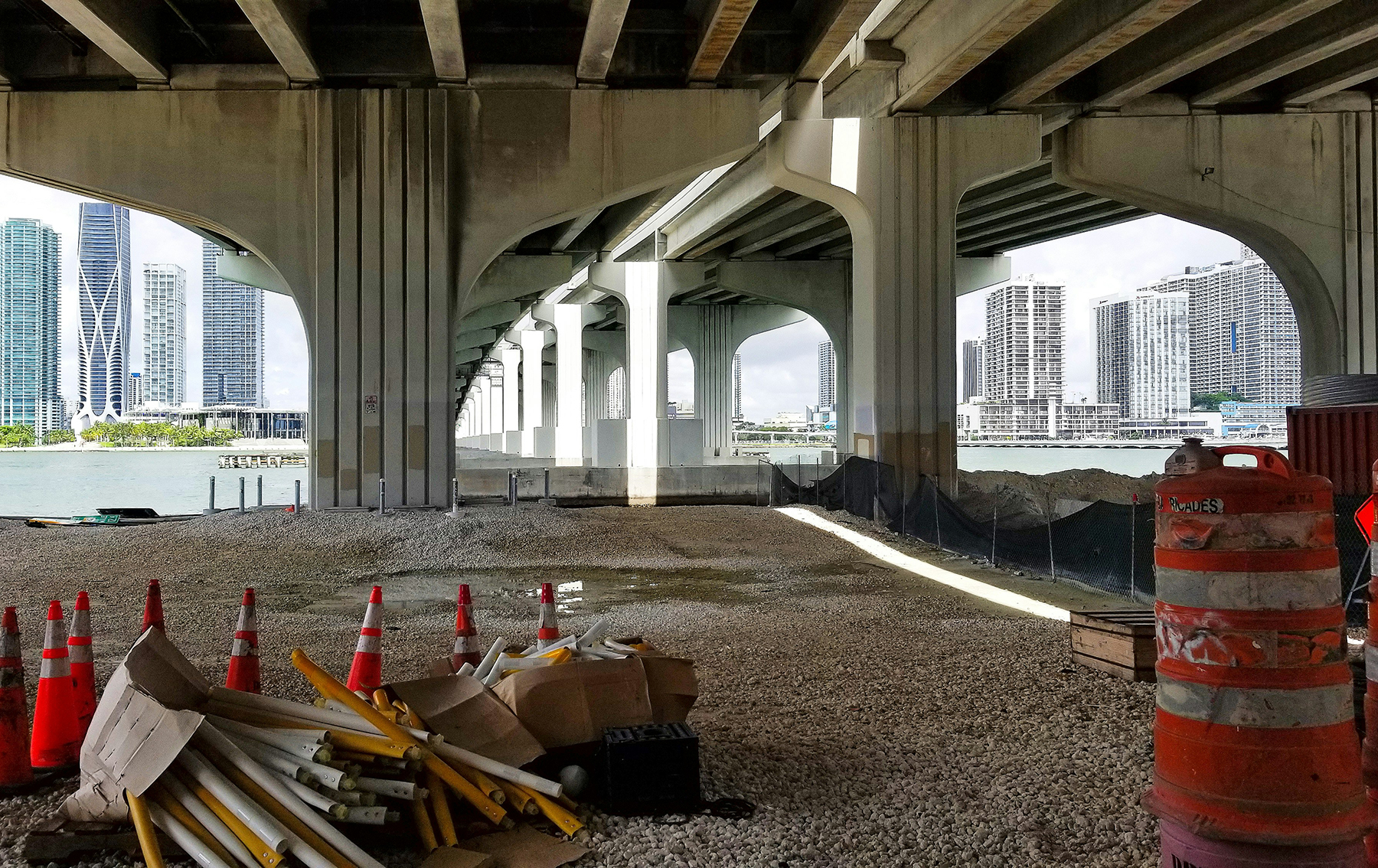 George Pagan III via Unsplash
George Pagan III via Unsplash We all have that one uncle we are obligated to invite to our upcoming Thanksgiving dinners.
Yes, he makes people uncomfortable. Yes, he oversteps boundaries sometimes. But he brings something important to the family’s holiday table. Maybe even something crucial to the family’s health and well-being.
Further reading:
- 5 key takeaways from the ‘2025 Report Card for America’s Infrastructure’
- New ASCE report shows civil engineering salaries up an average $9,000
- How artificial intelligence can speed up transportation engineering
For civil engineers, the National Environmental Policy Act occupies that seat at the table on project after project. The law, designed to safeguard the environment, requires federal agencies to assess proposed actions involving federal dollars, federal government work, or federal permitting.
It can bring pain, but engineers recognize and respect its importance in protecting the public.
Still, a drumbeat is building to reform NEPA. Is there a way we can eliminate some of the downside while continuing to embrace a modified version of “Uncle” NEPA for the greater good?
The need to strike a balance
Decision-makers for years have been advocating for a streamlined NEPA process. For example, U.S. Rep. Sam Graves, R-Mo., speaking in March at ASCE’s Solutions Summit just after the release of the 2025 Report Card for America’s Infrastructure, decried the drawn-out process that projects often face.
“When projects take forever, when it takes seven years before you can turn a shovel of dirt, that’s just ridiculous,” said Graves, who is chair of the House Committee on Transportation and Infrastructure. “It just should not be that way.”
The report card itself notes “the need to reduce delays in the project permitting process.”

Kristina Swallow, P.E, Pres.18.ASCE, sees lots of value in NEPA, particularly the environmental protections it offers. She says that the NEPA process, though not perfect, often leads to better projects.
Swallow has worn many different hats in her career, giving her differing vantage points on the issue. She is a former Senate aide, was the director of the Nevada Department of Transportation, and is currently an assistant city manager for Tucson, Arizona.
“We should be doing NEPA,” she said. “Yes, it may add cost; yes, it may add time. But we need to find a way to make sure that when it’s doing that, it does it in a beneficial way and that we all understand why we are doing it, and we are not just adding unnecessary time to the project.”
As the county engineer for Lucas County, Ohio, Mike Pniewski, P.E., P.S., F.ASCE, mostly handles projects such as building roundabouts, expanding existing roadways, or adding bike lanes.
Pniewski sees these types of projects as different from large-scale projects that endure rigorous NEPA approvals. But these smaller projects face the same NEPA scrutiny as their larger counterparts.
“The problem with the one-size-fits-all solution is that a lot of times it will bog down projects that have very little risk, but you have to go through the process because legally you’re required to do so,” he said. “It doesn’t matter if you have a small project or a large project; you’re going through the process. There needs to be a better balance in terms of evaluating the risk of the project and the impacts of the project versus what’s going to happen and dealing with any potential unanticipated consequences.”

In Pniewski’s favor, Ohio is one of eight states that have applied for and been granted NEPA assignment. This gives states the authority to assume NEPA responsibilities for transportation projects, which can cut down project timelines.
“There’s an environmental specialist doing NEPA at each of the district offices, so we work with our district office and go through what would be required from NEPA right off the bat and figure out what we can do and how to try to expedite it and make it go as smoothly as possible,” Pniewski said.
David Mathews, P.E., ENV SP, M.ASCE, a private consultant in Greater Kansas City, sees the positive sides of NEPA, including environmental and socioeconomic considerations.
Mathews held a variety of technical and managerial positions during a 36-year career with the U.S. Army Corps of Engineers and appreciates the NEPA process, though he sees flaws in it.
“We should do all the things that NEPA requires,” Mathews said. “All those are good things for large, scheduled construction projects. In my mind, the problem with NEPA is it’s kind of gone too far, and sometimes we can get balled up with little tiny projects, little tiny decisions that have to go through the NEPA process.”
In addition to NEPA assignment, there has been movement to reform NEPA. The Fiscal Responsibility Act of 2023 included limited reforms to NEPA, and a Supreme Court decision in May of this year narrowed the scope of required environmental analyses.
The Standardizing Permitting and Expediting Economic Development Act was introduced in the House in July. The SPEED Act would significantly streamline the NEPA process.
What might reform look like?
When it comes to reforming NEPA, Swallow sees four important considerations:
- Clarity in terms of what’s expected
- Clarity in terms of how long the review will take and how decisions will be made
- Concurrent reviews versus sequential when multiple agencies are involved
- A required timeline for the review
Pniewski says informing the public about risk is important for any project. But the NEPA requirements must be put in perspective, he said.
“I think the intent is good in terms of informing the public on risks and what type of impacts a project could have on a community and on the natural and social environment,” he said. “But it’s gone to the point where we’re even taking very simple projects that have little to no risk in any way, shape, or form and making them go through the process.”
Mathews echoed that sentiment.

“NEPA is needed for the big projects, but it just hasn’t been scaled down as well as it could be, in my opinion,” he said. “At the Corps of Engineers, it got to be that any decision the Corps made had to be satisfied by NEPA, and there were just some routine decisions that could be made without going through that rigor, in my opinion.”
Swallow cited examples of projects where agencies or owners may have valid reasons why NEPA could be avoided or scaled back, including work in areas where a site is already disturbed and projects that are not extensive. “Doing a minor project in an area that is already disturbed is much different than, for example, building a new bridge through wetlands,” she said. “That’s going to take longer.”
Swallow, Pniewski, and Mathews all emphasized the importance of not going too far in reforming NEPA. It has been in place since then-President Richard Nixon signed it into law in 1970.
There are plenty of reasons – namely, protection of people and the environment – for its enduring existence.
“There is a balance between speed and caution,” Pniewski said. “Sometimes speed can be a good thing if the risk allows you to go speedily while you’re keeping track of the factors that can happen. Sometimes, the need to go fast and to get projects done results in unanticipated consequences.
“Sometimes it’s very difficult to be able to balance the need for speed versus the need for avoiding unanticipated impacts to the natural and social environment.”
And reforming NEPA isn’t the only way to make projects move faster. At the local level, Swallow, in her current role, says Tucson has committed to a seven-day review process for smaller, less-intensive projects and a 30-day review process for larger, more complex projects.
She also says project owners should consider which project delivery method makes the most sense on a case-by-case basis. For example, using the design-build approach can save time, as the contractor is involved very early in the process and work on the project can start before design is complete.
Artificial intelligence can also be used to reduce time. But Pniewski warns that AI may not be the ideal solution people are hoping for. At least not yet.
“People are trying to find ways to make AI work, but I don’t think we’re there yet in terms of handing over large portions of our process or large portions of the things that we do to AI or a computer system,” he said.” We’re not there yet, and I don’t see us being there for quite some time.”
The ongoing worker shortage in the profession can also cause delays, Swallow said.
“It starts with, ‘Do you have the people who can deliver, whether it’s the design, the review, or the construction?’” she said. “If you are capacity constrained on the people side, it’s going to take longer.”
In the big picture, engineers must assess all aspects to ensure projects are done efficiently and safely.
“What are the things we can do in terms of our processes to make it so that we can get these projects in the ground and serving our residents faster while protecting the public’s interest in terms of the health, safety, and welfare?” asks Pniewski. “It’s a delicate balance.”
Also of note
- The federal government shutdown is approaching the U.S. record for length. The 2018-19 shutdown lasted 35 days, which the current one would match if still in effect on Nov. 4. Recently, the national debt surpassed $38 trillion, exacerbated by the shutdown’s economic disruptions.
- ASCE’s Maryland Section issued the state an overall grade of C in the 2025 Report Card for Maryland’s Infrastructure. Five individual categories improved, while four fell since the state’s 2020 report card, which also carried an overall C grade.
- The U.S. Department of Transportation issued an interim final rule changing the qualifying process for women- and minority-owned businesses in the agency’s Disadvantaged Business Enterprise, removing sex and race as criteria for automatic certification under DBE. Moving forward, applicants must demonstrate social and economic disadvantage, rather than qualifying automatically based on race and/or sex.
- Oregon legislators approved a transportation package expected to generate $4.3 billion in new revenue over the next decade. Among its provisions: an increase of the state’s gas tax by six cents a gallon, higher fees for vehicle title and registration, a temporary rise in the state payroll tax for transit funding, and a requirement for electric and hybrid vehicles to participate in the state’s road usage charge program. Gov. Tina Kotek has until Nov. 12 to sign the bill into law.



